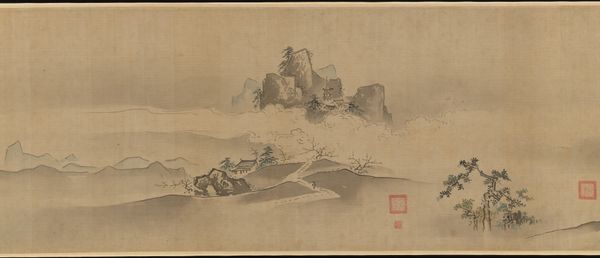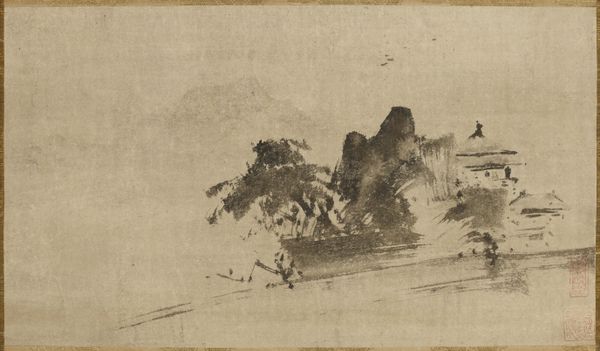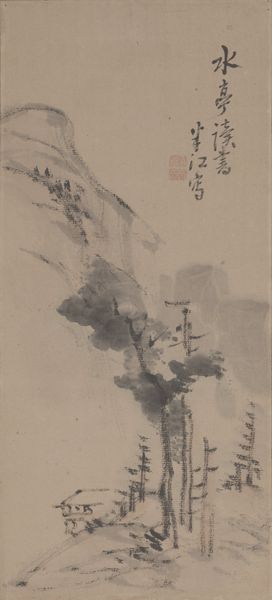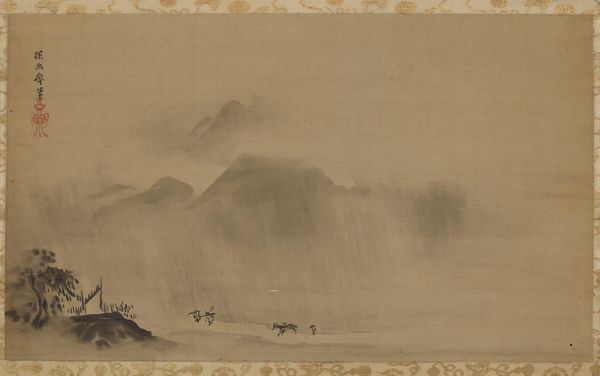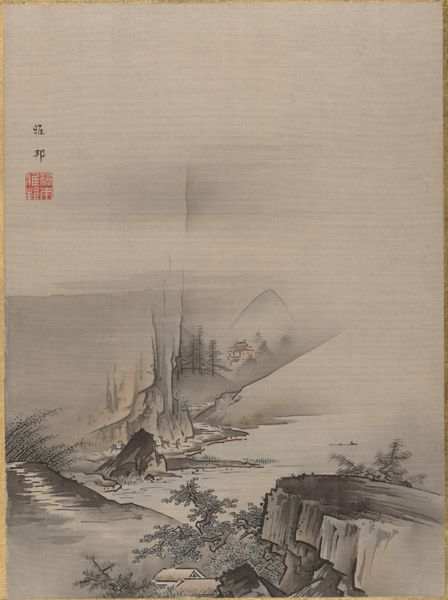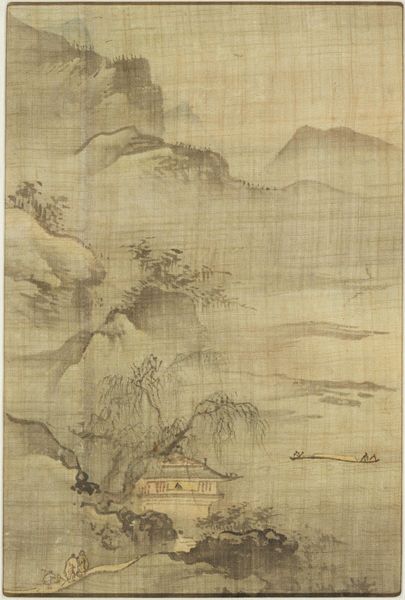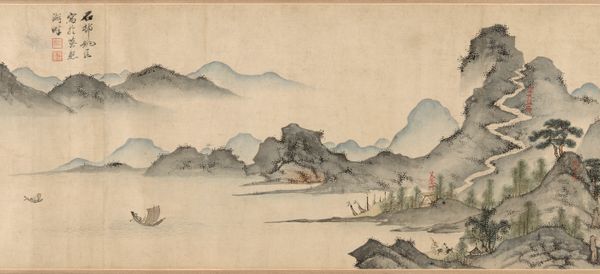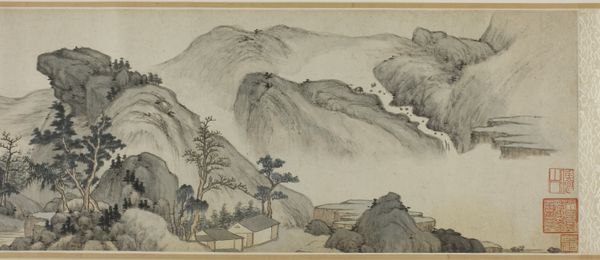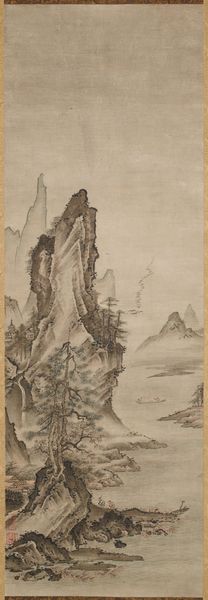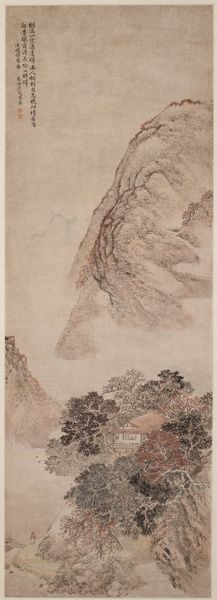
tempera, painting, watercolor, ink
#
water colours
#
tempera
#
painting
#
asian-art
#
landscape
#
watercolor
#
ink
Dimensions: Image: 10 3/8 × 57 in. (26.4 × 144.8 cm) Overall with mounting: 10 5/8 in. × 28 ft. 1/4 in. (27 × 854.1 cm)
Copyright: Public Domain
Editor: This is "Cloudy Mountains" by Fang Congyi, created sometime between 1360 and 1370. It's a painting using ink and color on paper. I'm really drawn to the way the mountains seem to emerge from the mist. How would you interpret this work? Curator: I see a sophisticated engagement with materiality and labor. Look at the delicate application of ink and watercolor; the artist demonstrates complete mastery, highlighting the intensive training and labour involved in its production. But let's think beyond the individual artist: consider who had access to these materials and the time needed to produce such a work during that period. Does it make you consider the social structure of that era? Editor: It does make me think about privilege and access to resources. But could you elaborate on the materiality? Curator: The choice of ink and watercolor on paper, while seemingly simple, speaks volumes. The materials themselves were products of complex trade networks and industries. Think about the cultivation of the plants used for pigments, the production of paper, and the social systems supporting that infrastructure. And what about the choice to represent mountains? Why that subject matter? Editor: Perhaps the mountains were seen as stable and permanent in an era of significant political and social change, given that the Yuan dynasty, of which Fang Congyi was part, was declining at the time this was painted. Curator: Exactly. So we have this artist, embedded within a very specific socio-economic system, using materials that signify privilege, depicting mountains—a motif linked to longevity and power. It invites us to see beyond the aesthetic and understand art's inherent connection to labor, production, and consumption. Editor: This gives me so much to consider. I always thought about the individual artist's expression, but you’ve opened my eyes to how art is deeply embedded in broader material and social contexts. Curator: And by considering art's means of production and the social dynamics in which it occurs, you will be able to challenge existing norms, question the canon, and look at all works through a new lens.
Comments
No comments
Be the first to comment and join the conversation on the ultimate creative platform.
